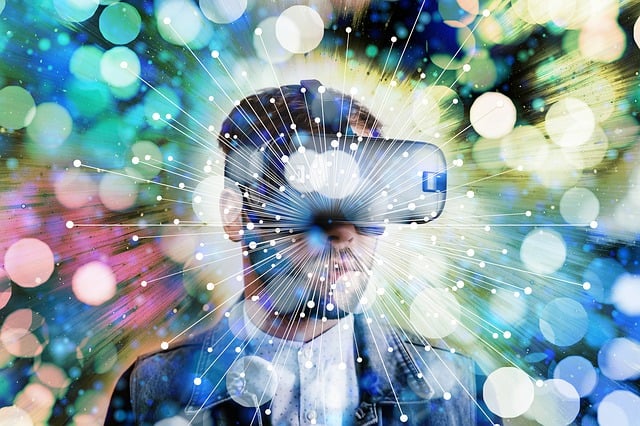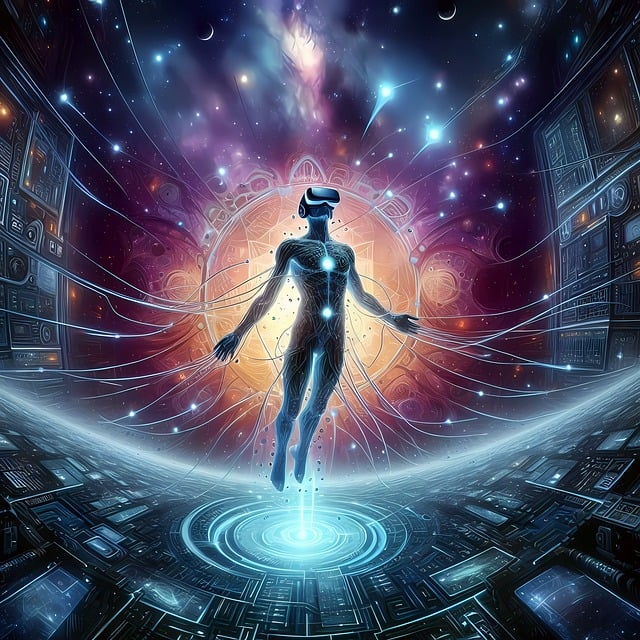Table of Contents
Virtual Reality: Beyond Gaming.Virtual Reality (VR) is most often associated with gaming, transporting users into immersive, interactive environments for thrilling gameplay. However, VR technology has far broader applications that extend beyond the world of video games. From education and healthcare to training simulations and virtual tourism, VR is reshaping numerous industries, unlocking new ways to connect, learn, and experience the world. This article explores how VR is revolutionizing sectors beyond gaming, highlighting the possibilities and potential this technology holds.
The Evolution of VR Technology
VR has come a long way since its early conceptual stages. Initially, VR was limited by technological constraints and high costs, making it inaccessible to most sectors outside of gaming and niche research. However, as hardware has improved and prices have decreased, VR has become increasingly viable for various applications.
Key Advancements in VR
Some technological advancements that have broadened VR’s applicability include:
- Improved Graphics and Resolution: Enhanced display quality has made virtual environments more realistic and engaging.
- Better Tracking Systems: Advanced motion tracking allows for more natural interactions within VR environments.
- Standalone VR Headsets: Devices like Oculus Quest have eliminated the need for high-end computers, making VR more accessible.
- Haptic Feedback: Haptic gloves and suits provide a sense of touch, increasing immersion and functionality across different fields.
These advancements have paved the way for VR to thrive beyond gaming, enabling practical uses that provide real-world value in fields ranging from medical training to collaborative workspaces.
VR in Education and Training
One of the most impactful applications of VR outside of gaming is in education. VR offers interactive, hands-on experiences that can enhance learning and retention, making it especially valuable for fields that require practice-based skills.
Simulating Real-World Scenarios for Practical Learning
For example, VR can simulate real-world environments for students studying:
- Medical Procedures: Medical students can practice surgeries and diagnostic procedures in VR, which provides a safe environment for making mistakes and learning.
- Engineering and Mechanics: VR simulations enable engineering students to interact with complex machinery and learn mechanics without the risk or cost of physical equipment.
- Disaster Response Training: First responders can practice disaster scenarios in VR, which helps them prepare for emergency situations in a controlled environment.
Enhanced Classroom Experiences
Teachers are beginning to use VR as an educational tool in traditional classroom settings, allowing students to:
- Explore Historical Sites: History students can “visit” ancient civilizations, bringing textbook lessons to life.
- Experience Scientific Phenomena: Science students can dive into the ocean or visit space, exploring environments that would otherwise be impossible to access.
This experiential learning approach not only increases engagement but also fosters a deeper understanding of concepts.
VR in Healthcare
The healthcare sector is increasingly leveraging VR to train, treat, and support patients. VR offers promising solutions for patient care, surgical planning, and therapy, helping both healthcare professionals and patients alike.
Medical Training and Surgical Simulation
VR enables surgeons to practice complex operations in a risk-free environment. This is particularly beneficial for rare or high-stakes procedures, where hands-on practice can make a significant difference. Through VR, surgeons can:
- Perform Virtual Surgeries: Practicing on virtual patients helps doctors refine their skills without risking patient safety.
- Study Anatomical Models: 3D models of human anatomy allow for more interactive and detailed study compared to traditional methods.
VR Therapy for Mental Health
VR is emerging as a powerful tool for mental health treatment:
- Exposure Therapy: For patients with phobias or PTSD, VR offers controlled environments to confront and manage fears, such as simulating social situations for those with social anxiety.
- Stress and Anxiety Reduction: Meditation apps in VR offer relaxing environments for stress relief, providing immersive settings like beaches or forests that can enhance the effectiveness of relaxation techniques.
- Pain Management: VR has been used to distract patients during painful procedures or recovery, proving effective in reducing perceived pain.
VR in Business and Remote Collaboration
As remote work continues to grow, VR offers new opportunities for collaboration and communication across distributed teams. VR allows coworkers to interact in a shared virtual space, offering more engaging alternatives to standard video calls.
Virtual Workspaces
VR can simulate office environments, allowing remote workers to:
- Collaborate in Real-Time: Employees can “meet” in a virtual office, interacting as they would in person, which can make brainstorming and collaborative projects more dynamic.
- Present and Visualize Data: VR enables teams to present information and visual data in 3D, which can enhance understanding of complex information.
- Engage in Team Building: VR allows for unique team-building activities, from virtual scavenger hunts to collaborative games that encourage bonding and engagement.
Virtual Events and Conferences
Many businesses are now holding virtual conferences and events in VR, where attendees can:
- Participate in Workshops: VR enables hands-on workshops and tutorials that would be impossible over traditional video calls.
- Network in a 3D Environment: Attendees can mingle and chat in breakout rooms or lounges, creating a more organic networking experience compared to standard online events.
- Showcase Products: VR allows companies to demonstrate products in interactive ways, providing a more memorable experience for attendees.
VR in Real Estate and Architecture
Real estate and architecture have embraced VR as a way to showcase properties and designs interactively, saving time and resources while providing immersive experiences.
Virtual Property Tours
For potential buyers or renters, VR offers a convenient way to view properties without physical visits. This is especially beneficial for those moving from afar or with limited time. Benefits include:
- Remote Walkthroughs: Buyers can tour properties remotely, saving time and travel costs.
- Customized Visualization: VR can simulate different furnishing or remodeling options, allowing clients to see how changes would look in real life.
Architectural Visualization
Architects are using VR to bring their designs to life before construction begins. VR allows architects to:
- Present Walkable 3D Models: Clients can walk through models of buildings, providing a true sense of scale and layout.
- Experiment with Design Elements: Designers can quickly adjust features like lighting, materials, or layout, giving clients a range of options to visualize.
VR in Tourism and Cultural Preservation
For those who cannot travel physically, VR offers the chance to explore destinations and experience other cultures. VR also serves as a valuable tool for preserving cultural heritage, ensuring that future generations can experience important sites and artifacts.
Virtual Tours of Destinations
Tourism boards and travel companies are using VR to offer virtual tours of popular destinations. These immersive tours allow users to:
- Experience Global Landmarks: VR brings famous landmarks and tourist sites to users’ homes, offering a taste of travel from anywhere.
- Preview Vacations: Some companies provide VR previews of destinations, allowing potential tourists to explore hotels, local attractions, and activities before booking.
Preserving Cultural Heritage
Organizations are using VR to digitally preserve historical sites and artifacts. These VR experiences allow people to:
- Visit Archaeological Sites: Virtual reconstructions of ancient ruins or UNESCO sites ensure that even if the physical sites are endangered, they can still be experienced.
- Explore Art and Museums: Museums are creating VR exhibits that let users view priceless artifacts and artworks from around the world, making culture accessible to a broader audience.

VR in Sports and Physical Training
VR is revolutionizing sports training, enabling athletes to practice skills, visualize plays, and enhance their techniques through simulated environments.
Training for Professional Athletes
VR offers athletes:
- Skill Development: Athletes can practice specific moves or scenarios in VR, allowing for repetition without physical wear.
- Game Strategy: Teams can use VR to visualize plays and analyze opponents’ techniques, improving their tactical understanding of games.
- Mental Preparation: Athletes can mentally rehearse high-stakes scenarios, like penalty kicks, to enhance performance during real events.
VR for General Fitness
Beyond professional training, VR also offers fitness apps that make exercise more enjoyable and engaging. These applications:
- Gamify Exercise: Virtual fitness programs turn workouts into fun activities, from VR boxing to interactive dance routines.
- Encourage Movement: VR fitness apps provide motivation for people who may otherwise find traditional exercise unappealing.
The Future of VR: Integrating AI and Augmented Reality
VR continues to evolve with the integration of other advanced technologies such as Artificial Intelligence (AI) and Augmented Reality (AR). AI-enhanced VR can offer more interactive and personalized experiences, while AR enables real-time data overlays in real-world environments.
AI-Powered Virtual Experiences
AI can personalize VR environments, offering unique scenarios based on user preferences. For example:
- Adaptive Learning: In education, AI can adapt VR lessons to students’ learning paces and styles, improving retention.
- Realistic Interactions: AI-powered characters in VR can respond to users’ actions in lifelike ways, creating more immersive experiences.
Blending VR and AR for Mixed Reality Experiences
As VR and AR technologies merge, they offer mixed reality experiences that blend virtual elements into the real world. Applications include:
- Enhanced Medical Procedures: Surgeons can see real-time data or imagery overlaid during surgery, making complex procedures safer and more precise.
- Field Service and Repairs: Technicians can receive guidance and troubleshooting instructions in their field of view while working on machinery or equipment.
Virtual Reality is rapidly expanding beyond gaming, proving to be a transformative technology across numerous industries. From enhancing educational experiences to revolutionizing medical training, VR is shaping the way we learn, work, and interact. As technology continues to advance and VR becomes more accessible, its applications will likely continue to grow, opening up new possibilities in virtually every field.


